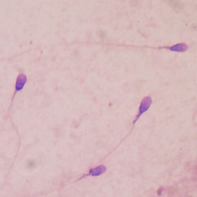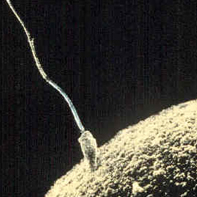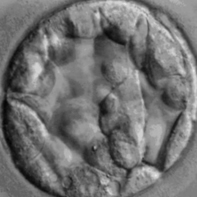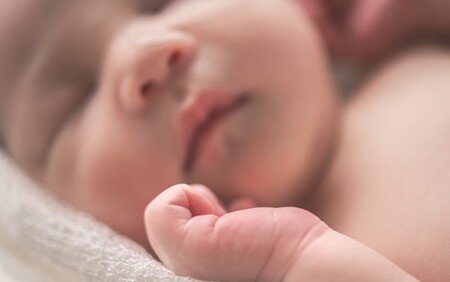Fertility Basics
Need help getting pregnant?
Whether it's a fertility check up or fertility advice and assisted conception treatment, Complete Fertility Centre can help you on your fertility journey to have the best chance of a healthy baby. Book an appointment using our from below, or come along to one of our free events for people thinking about starting fertility treatment.
Understanding the reproductive process
Achieving a healthy pregnancy is a complicated, multi-stage process involving two people. Every month, the female ovulates one mature egg from one of her ovaries. This egg leaves the ovarian follicle and is ‘captured’ in the end of the Fallopian tube. Here, it will begin to move slowly down the tube towards the womb (uterus). However, for a pregnancy to develop it must first meet sperm from the male whilst it is still held in the fallopian tube.
So how does the sperm get to the egg?
The sperm leave the man’s penis by ejaculation and are deposited in the vagina high up near the cervix (the opening to the womb). The sperm immediately begin swimming and some will find their way into the cervix.
The Sperm's Journey to the Egg
The sperm then begin their long journey towards the egg. Leaving the cervix they enter the womb. Here, they swim towards the Fallopian tubes. The vagina and the womb are quite hostile environments for sperm, however, once the sperm reach the Fallopian tubes they are mainly free from the potential negative effects of the woman’s immune system. Only 1 in 14 million of the ejaculated sperm will reach the Fallopian tube, but once there the sperm should pick up chemical signals from the egg to help them find their way forward.
The sperm finally near the egg and push towards its shell (called the zona pellucida). Many sperm will bind to this shell, but only 1 sperm will be allowed to go all the way through to reach the egg inside.
Sperm can survive for a few days in the female reproductive system – hence a sperm ejaculated during intercourse on a Monday could fertilise an egg ovulated on the Tuesday or Wednesday!
Try our ovulation calculator to find out the best time to conceive.
Fertilisation
Once the sperm has gained entry to the egg a complex chain of events occurs over a period of about 16 hours culminating in the sperm’s genetic material forming a structure called the ‘male pronucleus’ and the egg’s genetic material forming a ‘female pronucleus’. The male and female pronuclei move together to the centre of the egg and during IVF this can be seen down the microscope. The egg can now be called a fertilised embryo and would normally be at this stage 1 day after ovulation.
Embryo development
The following day after fertilisation the embryo’s genetic material should double then halve forming 2 identical cells all still within the shell. This doubling of genetic material and halving continues over the next 2 days until the embryo is around 8 cells.
At 8 cells the embryo continues to keep dividing to make more cells, but now the cells become very tightly bound and start to communicate with each other.
Around day 4 to 6 after fertilisation the blastocyst stage of the embryo begins. Fluid starts to fill inside the embryo making a small cavity. The outer cells begin to form a wall and the inner cells form a ball - this will become the future baby.
Implantation
All this time the embryo has been rolling down the Fallopian tube, but at the blastocyst stage the embryo enters the womb. Over the next few days it will hatch out of its shell and begin to bury into the wall of the womb. It will grow and eventually form blood vessel connections with the mother. This stage of connecting with the womb wall is called ‘implantation’ and is another critical stage in achieving a pregnancy.
At this point the embryo is sending out chemicals into the mother’s blood stream, and from about 2 weeks from fertilisation the chemicals have reached a level which will be picked up by a pregnancy test.
The embryo must then continue to grow and develop the different types of cells and structures necessary to become a baby. The process of conception has occurred and the woman can now say she is ‘pregnant’.
The story of an embryo
Human Sperm

Human sperm seen under a microscope.
Human Egg

A human egg surrounded by cumulus cells. Having provided support for the egg during its growth in the follicle, this matrix must now be effectively penetrated by sperm for fertilisation to occur.
Sperm and Egg

Sperm binds to the surface of a human egg. Only one will be permitted to fuse with its inner membrane and give rise to an embryo.
Fertilisation
Successful fertilisation results in the formation of a zygote. Two circles inside the cell contain the DNA from each parent. Fusion of these creates a genetically new embryo.
Blastocyst

Embryo at the early blastocyst stage (day five of development).
Hatching
During the process of hatching, which occurs at around day 6 of development, the embryo emerges from the rigid shell in which it has been encased.
Embryo at six weeks
The embryo at approximately six weeks from conception has a heartbeat.
Problems getting pregnant
The above demonstrates just some of the many complicated steps that must occur to become pregnant. Not only must the woman ovulate a mature egg and the man produce sufficient swimming sperm; but the sperm must reach the egg; the egg must change its structure to become a fertilised embryo; the genetic material of the embryo must be correct; the embryo must divide correctly until it forms a blastocyst; and the blastocyst must implant in the womb without being rejected. It’s no surprise that some people experience problems with getting pregnant! A fertility check can help you understand your fertility status.
When to seek help?
If you are having trouble conceiving, you are not alone. One in six couples in the UK experience difficulties conceiving.
Here at Complete Fertility we provide a professional, friendly service supported by the latest IVF technology and experienced clinicians.
Complete Fertility offers
- World-class success rates
- IVF, ICSI, egg share, IUI, FET and fertility treatments with donor eggs and sperm
- Competitive packages and interest-free plans
- NHS and private patients welcome
- NHS outpatient clinic
- Treatment for heterosexual and female same sex couples and single ladies
- Strong emphasis on patient support
To find out more about how we can help, please contact us on 02380 010 570, info@completefertility.co.uk or book an appointment with a fertility consultant using our form below.


